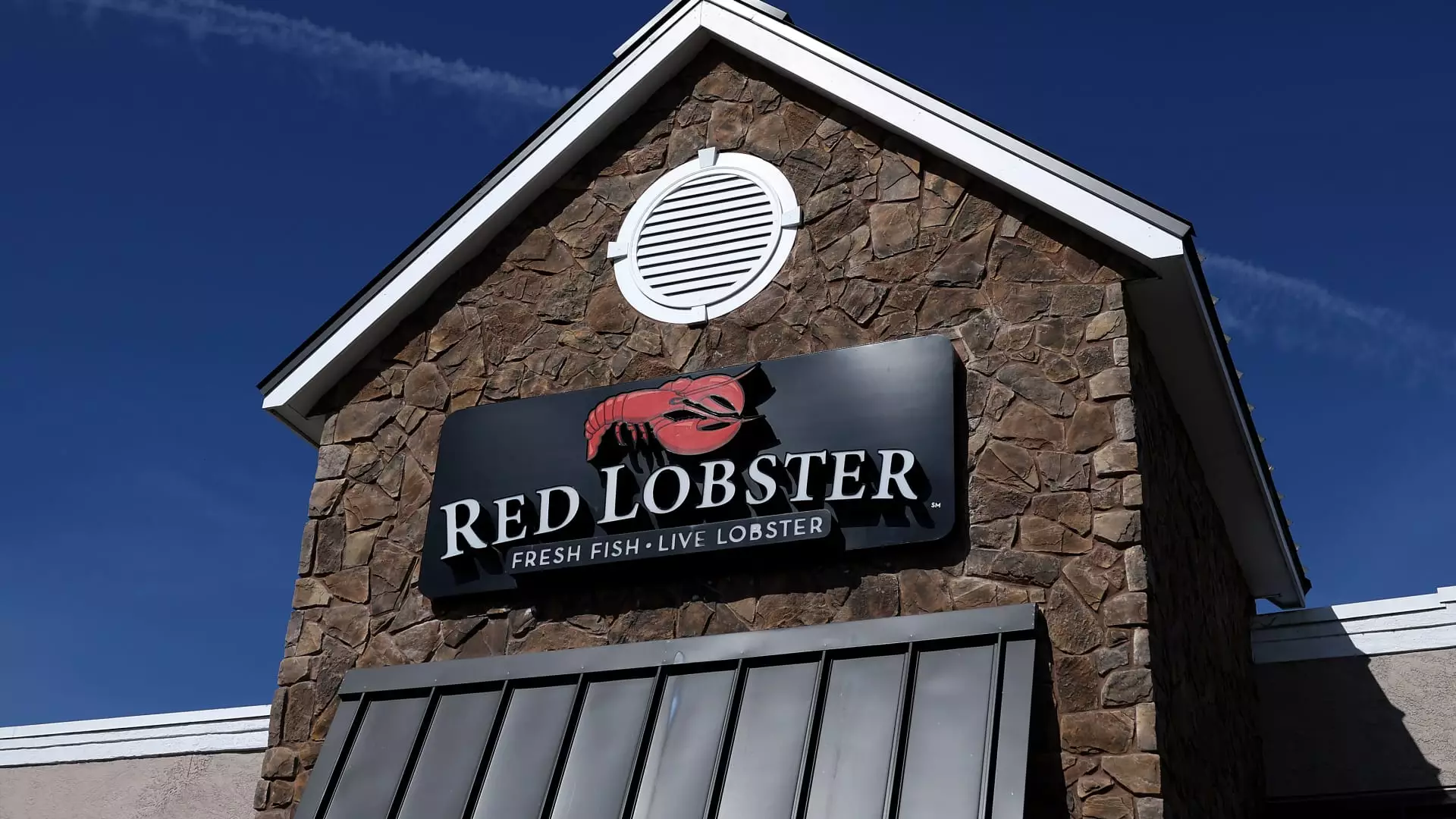Red Lobster, a well-known seafood chain, recently filed for Chapter 11 bankruptcy protection as a result of significant debt and long-term leases. The company is currently in the process of seeking a buyer to help alleviate its financial struggles. Red Lobster has received a stalking horse bid from its existing lenders, but is open to higher bids. This move comes after the closure of 93 underperforming locations and the request to reject 108 leases in order to streamline its operations.
The restructuring expert, Jonathan Tibus, who was appointed as the CEO, has attributed the chain’s need for bankruptcy protection to various factors such as a difficult macroeconomic environment, a bloated restaurant footprint, failed strategic initiatives, and increased competition within the industry. Red Lobster currently operates 551 locations in the U.S. and 27 restaurants in Canada. The company has faced challenges in terms of operational efficiency, with a revolving door of CEOs in recent years and a net loss of $76 million reported in fiscal 2023.
One of the major setbacks for Red Lobster was the ill-conceived “endless shrimp” promotion, which led to significant losses for the company. The promotion aimed to boost sales by offering unlimited shrimp, but it ended up putting a strain on the company’s bottom line. Additionally, Red Lobster’s decision to eliminate two shrimp suppliers under interim CEO Paul Kenny’s leadership and rely solely on Thai Union Group as its supplier led to higher costs. There are also concerns that Thai Union and Kenny may have pushed for in-store promotions that resulted in major shortages of shrimp, further exacerbating the company’s financial woes.
Red Lobster was founded in 1968 and was later purchased by General Mills before being spun off into Darden Restaurants in 1995. In 2014, Darden sold Red Lobster to Golden Gate Capital, and later on, Thai Union Group acquired a stake in the chain. By 2020, Thai Union and other investors bought out Golden Gate’s remaining stake. Despite surviving the pandemic, Red Lobster has struggled to maintain its business, with a significant decline in traffic and revenue since 2019.
Jonathan Tibus, the current CEO, believes that the restructuring process is the best path forward for Red Lobster. The company aims to address its financial and operational challenges in order to emerge stronger and refocused on growth. With the support of lenders and vendors, Red Lobster is hopeful that it can complete the sale process efficiently while prioritizing its employees and guests. Despite the current challenges, Tibus remains optimistic about the future of Red Lobster and is committed to turning the business around.
The downfall of Red Lobster can be attributed to a combination of financial challenges, operational issues, questionable business decisions, and management instability. The company’s decision to file for Chapter 11 bankruptcy protection marks a critical turning point in its history. Moving forward, Red Lobster will need to implement strategic changes, streamline its operations, and rebuild its brand in order to regain its position in the market. Only time will tell whether Red Lobster can overcome its current challenges and emerge as a stronger and more resilient company in the future.


Leave a Reply